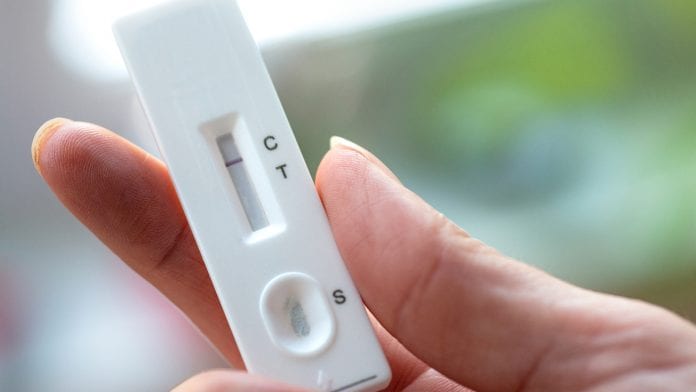
A new study has suggested that lateral flow tests are not sufficient for testing COVID-19 infection in individuals with low viral loads.
The new study carried out by researchers at the University of Birmingham suggests that despite lateral flow tests being highly effective in identifying SARS-CoV-2 in individuals with high quantities of viral RNA present on the test swab, they are inaccurate at diagnosing infections in individuals with lower viral RNA loads.
The UK plans to implement mass population testing using the devices despite the devices’ sensitivity being unknown. The researchers have suggested that a negative result should not be used to determine that someone is free from COVID-19.
The findings have been published in the journal PLOS Biology.
Accuracy of the devices
To determine the sensitivity, Alan McNally at the University of Birmingham, UK, and colleagues tested the nasopharyngeal swabs of 8,000 university students using the devices. They then validated all positive samples and randomly selected 720 negative samples out of 7,187 negatives for validation.
The team used reverse transcription polymerase chain reaction (PCR) tests to estimate the true COVID-19 prevalence rate and compared it to lateral flow test results, finding that while the test was able to detect infections in samples with higher levels of viral RNA at a 100% accuracy rate, the performance of the test dropped significantly in samples with lower viral loads.
The researchers say this suggests that for individuals in the very early or very late stages of infection, LFDs are likely to produce a false negative result, pointing to the need for frequent testing.
The authors commented: “When used regularly, Lateral Flow Devices (LFDs) can be a highly effective tool in reducing overall community burden. We would strongly recommend that Lateral Flow Device testing is used to screen people at a very regular frequency, and that a negative result should not be used to determine that someone is free from SARS-CoV-2 infection.
“As such LFDs should not be used as a test-to-do.”
They also noted that a limitation of the study was that emergent variants and their potential effects on the tests’ sensitivity with asymptomatic cases were not considered within the scope of the study, although independent research suggests that both the UK and South African variants can be reliably detected.
























